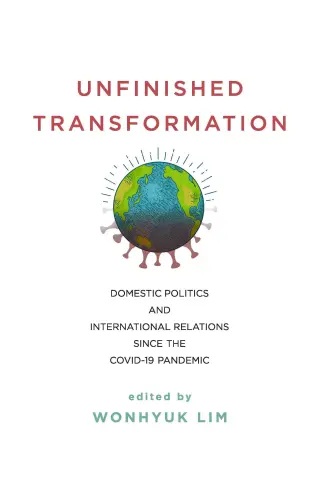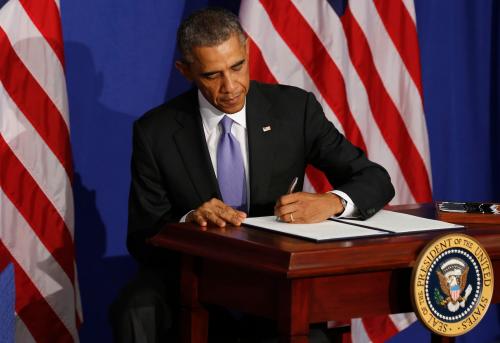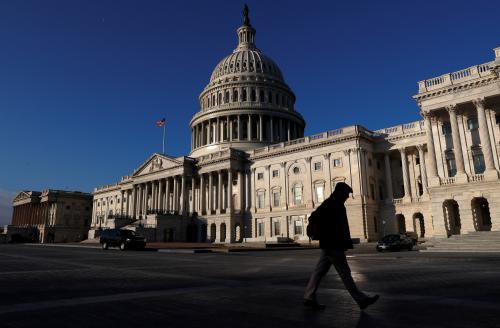This week President Trump angered environmentalists and other groups by reducing the size of two large national monuments in Utah—Bears Ears and Grand Staircase Escalante. Using Presidential Proclamations and invoking the 1906 Antiquities Act, he slashed these monuments by about 1 million acres. While groups of Utahns and especially the state’s Republican politicians applauded these executive actions, lawsuits alleging the president exceeded his powers were filed quickly.
These lawsuits claim that while presidents have the power under the Antiquities Act to designate national monuments, they do not have the power to reduce them in size. Courts have not directly addressed this question, but the claims rest on fairly shaky ground. In reality, courts are quite likely to uphold this exercise of presidential power (perhaps with one exception).
So, will Trump’s actions stand? Let’s get to know this issue a bit better.
What is the Antiquities Act?
Congress passed the Antiquities Act in 1906, delegating (really, sharing) a power it is given in Article I of the Constitution. It’s a very brief law that grants the president the power to:
“declare historic landmarks, historic and prehistoric structures and other objects of historic or scientific interest that are situated on lands owned or controlled by the Government of the United States to be national monuments, and may reserve as a part thereof parcels of land, the limits of which in all cases shall be confined to the smallest area compatible with proper care and management of the objects to be protected.”
Through this law, almost every president since Teddy Roosevelt has designated national monuments. And even since its inception, presidents have used this power to protect massive tracts of land. In fact, one controversy that has been adjudicated in the courts involves the size of land a president can designate a national monument. Courts have consistently ruled that when it comes to the designation of national monuments, size doesn’t matter.
The controversy surrounding “diminishment”
President Trump sparked controversy in reducing the size of two monuments established by Presidents Clinton and Obama. Formally, that move is labeled “diminishing” the size of the monuments. Critics claim that the Antiquities Act does not formally grant the president the power to undo what a predecessor has done. Instead, it grants to president power to do something. Specifically, he can designate new monuments or expand existing ones. However, it does not grant the power to diminish.
On its face, that is correct. The Antiquities Act does not engage the issue of diminishment. However, that does not mean that such power cannot be implied.
Others argue that a 1976 statute, the Federal Land Policy and Management Act, limits the president as it engages diminishment directly—noting limitations on the Secretary of the Interior to modify existing protected areas. Two challenges emerge from this argument. First is that the law is explicit in limiting the Interior Secretary’s powers and not the president’s power, even though Congress had constitutional authority to limit the president’s powers explicitly. Second, Congress, in engaging limitations broadly, listed numerous areas of law in which the executive branch would be restricted from diminishment (or abolition) and failed to include the Antiquities Act in that list.
What the law’s text does and does not say
It is true that the first part of the law grants the president the power to establish national monuments. The second part of that grant could easily be interpreted to imply the power to diminish. That section notes, “the limits of which in all cases shall be confined to the smallest area compatible with proper care and management of the objects to be protected.” Here, a president is charged to make this area as small as is needed. Courts have ruled several times on cases involving the Antiquities Act without once challenging the president’s discretion on the grounds of the size of the monument—even as cases dealt with some of the nation’s largest national monuments. (See discussions of relevant case law, including Cameron v. United States (1920) from the Congressional Research Service and in the Cornell Law Review.) As part of that discretion, presidents could consider mistakes.
Let’s take a hypothetical. Imagine President Reagan designated a 2,000 acre space in Michigan as a Native American burial site. Obviously, there is no question of the historical import of such a site. After designation, the National Park Service began to oversee the site and in surveying it, realized that the burial site is only 100 acres.[1] Would it be within President Reagan’s powers to diminish the size of the national monument to those 100 acres or slightly more to include a reasonable perimeter? One could argue that he is required by law to do so. Given that Congress has charged the president to confine such spaces “…to the smallest area compatible with proper care and management…” What if that survey were not conducted and completed until 1995? Would it have been in President Clinton’s powers to diminish the size of the monument established by President Reagan? Again, the law charges the president to consider such issues.
Is President Trump the first “diminisher-in-chief”?
One way to consider open legal questions about presidential power involves practice. Courts rely on precedent, but so, too, do presidents. Informal rules and norms within the presidency can be looked at by courts when legislative language is vague and a new issue arises. President Trump is the 20th president to serve since the passage of the Antiquities Act. If none of his predecessors ever sought to diminish a national monument, that could signal an expectation among presidents about the continuity of national monuments and their own interpretation of the statute.
So, what’s the verdict? President Trump is in pretty good company. John Yoo and Todd Gaziano note in a compelling article on this topic that in addition to there being “many other reductions or adjustments to boundaries,” Presidents Eisenhower, Truman, Taft (on multiple occasions), Wilson, and Coolidge reduced national monuments significantly. None of those diminishments were reversed by courts.
Presidents always reverse their predecessors
It is presidential practice to assume office and begin reconsidering the choices of your predecessors. Every president does, whether they share the party of that predecessor or not. The argument that a Presidential Proclamation cannot be undone by another Presidential Proclamation unless explicitly forbidden by law is ludicrous. Executive Orders, Presidential Proclamations, Executive Memoranda, presidential appointments, and especially regulations are reconsidered and reversed by new presidents all the time.
There is nothing sacrosanct about one president’s Proclamation that would preserve it in perpetuity (without Congressional intervention). Given that reality, it’s easily argued that Congress could have put in such a limit in the legislative language in 1906 or subsequently. Congress asserts such control in other areas. For example, there are numerous presidential appointees with fixed terms. Unlike the Secretary of Defense, who a president could fire at any time, a member of an independent regulatory commission can only be removed from office for cause, prior to the expiration of her term. Congress has chosen not to extend a limitation on these existing presidential determinations.
Congress as a remedy
Congress giveth and Congress can take away the power to designate national monuments. In Wyoming v. Franke (1945) the Supreme Court asserted that when Congress believes a president has erred in the designation of a national monument under the Antiquities Act, there exists a Congressional remedy. At the same time, Congress had several previous opportunities to limit presidential diminishment of national monuments by clarifying the language and has opted not to. (See Christine Klein’s 2002 article “Preserving Monumental Landscapes under the Antiquities Act” for a discussion of this case law.)
That is not to say that Congress has never stepped in when it comes to the Antiquities Act. In 1950, Congress explicitly limited future presidents’ ability to designate national monuments in Wyoming. This amendment occurred after numerous presidents designated massive tracts of land as national monuments and after several presidents diminished the sizes of other national monuments.
A possible limit to the president
While it appears clear President Trump has the power to diminish national monuments that were designated either by him or one of his predecessors, his proclamations from this week could run into a snag. Congress has constitutional authority over federal lands and delegated a share of that power to the president through the Antiquities Act. However, Congress reserves the right to expand, diminish or abolish national monuments—even ones the president designates, and it has. However, given the constitutional primacy of Congress’ power and the delegated nature of presidential authority, it does not seem likely that a president could change Congressionally-designated monuments.
The Grand Staircase Escalante National Monument creates an interesting context. In 1998, Congress passed the Automobile National Heritage Area Act, a law seemingly unrelated to a geological site in southern Utah. However, part of that law changed the boundaries of the Grand Staircase Escalante National Monument. That redefinition of boundaries—including diminishing part of the monument and expanding another part—could be interpreted as a Congressional designation of its national monument status, thus placing it in the category of monuments the president could not diminish. At a minimum, that law should protect the area extended by Congress in 1998 from the Presidential Proclamation diminishing large parts of the monument.
Ultimately, presidential power can be a complicated and difficult area of law. Presidential decisions, regardless of topic or the avenue by which presidents carry out those decisions, make some people happy and infuriate others. The issue of diminishment of national monuments under the Antiquities Act has been laden with significant controversy. Yet, much of the disagreement with presidential authority ignores reality, relies on a selective reading of the original statute and creative reading of subsequent statutes. President Trump’s decisions to reduce the size of two national monuments is consistent with federal law, historical precedent, and presidential power.
[1] There could be questions about the legitimacy of a president’s determination of the historical or scientific importance of land. In fact, some question President Trump’s argument of using scientific information in choosing to diminish Bears Ears and Grand Staircase Escalante. However, courts have given significant deference to presidential discretion in determining what is “significant.” In discussing Wyoming v. Franke, Klein (2002) argues, “the court suggested that anything short of a barren prairie might be a suitable candidate for monument status if the President were willing to declare it as such” (1350).
The Brookings Institution is committed to quality, independence, and impact.
We are supported by a diverse array of funders. In line with our values and policies, each Brookings publication represents the sole views of its author(s).











Commentary
President Trump has the power to shrink national monuments
December 7, 2017